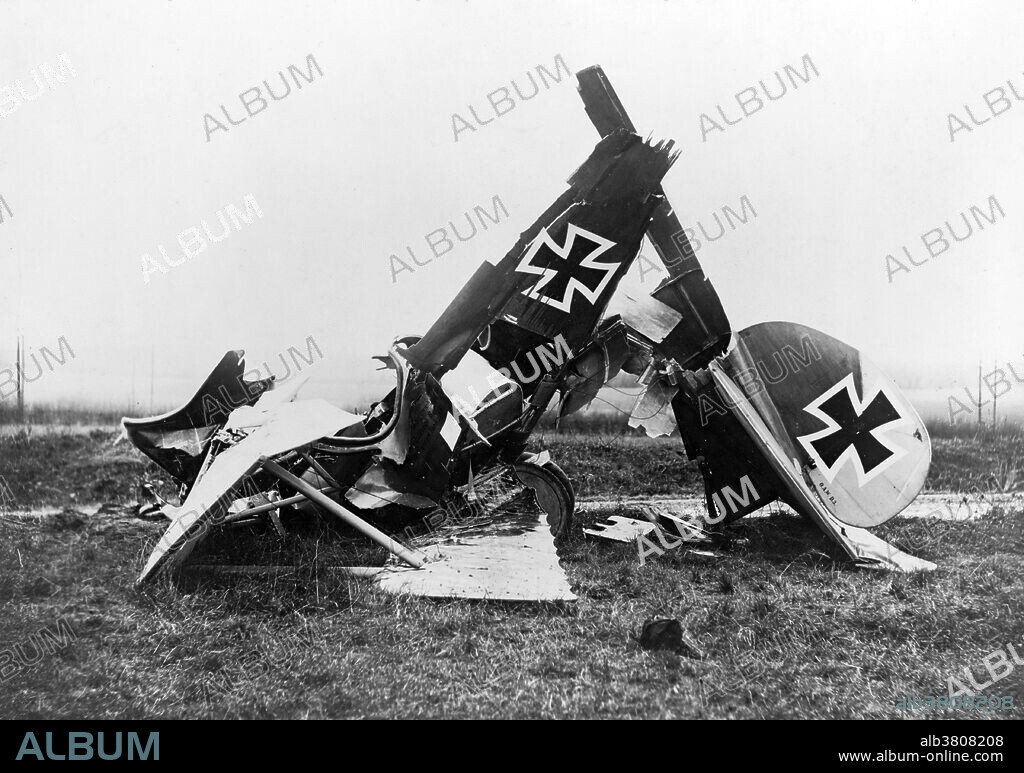alb3808208
WWI, Wreckage of German Fighter Plane

|
Añadir a otro lightbox |
|
Añadir a otro lightbox |



¿Ya tienes cuenta? Iniciar sesión
¿No tienes cuenta? Regístrate
Compra esta imagen

Título:
WWI, Wreckage of German Fighter Plane
Descripción:
Traducción automática: Restos de un biplano de caza alemán Albatross D. III. En el timón del avión: "OAWD3" para el fabricante Ostdeutsche Albatros-Werke, clase de avión D.3." Fotografía sin fecha de alrededor de 1917/18. El Albatros D.III fue un avión de combate biplano utilizado por el Servicio Aéreo del Ejército Imperial Alemán (Luftstreitkräfte) y el Servicio Aéreo Austrohúngaro (Luftfahrtruppen) durante la Primera Guerra Mundial. El D.III fue pilotado por muchos ases alemanes de primer nivel, incluidos Manfred von Richthofen, Ernst Udet, Erich Löwenhardt, Kurt Wolff y Karl Emil Schäfer. El D.III se consideraba agradable y fácil de volar, aunque algo pesado en los controles. La disposición sesquiplano ofrecía un ascenso, una maniobrabilidad y una visibilidad hacia abajo mejorados en comparación con el D.II anterior. Como la mayoría de los aviones contemporáneos, el D.III era propenso a girar, pero la recuperación era sencilla. El servicio máximo fue en noviembre de 1917, con 446 aviones en el frente occidental
Wreckage of a German Albatross D. III fighter biplane. On rudder of plane: "O.A.W. D.3" for the manufacturer Ostdeutsche Albatros-Werke, airplane class D.3." Undated photograph circa 1917/18. The Albatros D.III was a biplane fighter aircraft used by the Imperial German Army Air Service (Luftstreitkräfte) and the Austro-Hungarian Air Service (Luftfahrtruppen) during WWI. The D.III was flown by many top German aces, including Manfred von Richthofen, Ernst Udet, Erich Löwenhardt, Kurt Wolff, and Karl Emil Schäfer. The D.III was considered pleasant and easy to fly, if somewhat heavy on the controls. The sesqui-plane arrangement offered improved climb, maneuverability, and downward visibility compared to the preceding D.II. Like most contemporary aircraft, the D.III was prone to spinning, but recovery was straightforward. Peak service was in November 1917, with 446 aircraft on the Western Front.
Crédito:
Album / LOC/Science Source
Autorizaciones:
Modelo: No - Propiedad: No
¿Preguntas relacionadas con los derechos?
¿Preguntas relacionadas con los derechos?
Tamaño imagen:
4800 x 3374 px | 46.3 MB
Tamaño impresión:
40.6 x 28.6 cm | 16.0 x 11.2 in (300 dpi)
Palabras clave:
ACONTECIMIENTO • AERONAUTA • AERONAUTICA • ALEMAN • AVIACION • AVION BIPLANO • AVION • BIPLANO • BLANCO Y NEGRO • CONFLICTO BELICO • DESTRUÍDO • FAMOSO • FOTO • FOTOGRAFIA • GRAN GUERRA • GUERRA MUNDIAL I • GUERRA • HISTORIA • HISTORICO • IMPORTANTE • PRIMERA GUERRA MUNDIAL • SE ESTRELLÓ • SIGLO XX • WAR • WW1
 Pinterest
Pinterest Twitter
Twitter Facebook
Facebook Copiar enlace
Copiar enlace Email
Email
